
Sicily is the largest and most populous island in the Mediterranean Sea and one of the 20 regions of Italy. It is one of the five Italian autonomous regions and is officially referred to as Regione Siciliana. The island has 4.8 million inhabitants. Its capital city is Palermo. It is named after the Sicels, who inhabited the eastern part of the island during the Iron Age. Sicily has a rich and unique culture in arts, music, literature, cuisine, and architecture.

Catania is the second-largest municipality in Sicily, after Palermo, both by area and by population. Despite its reputation as the second city of the island, Catania is the largest Sicilian conurbation, and among the largest in Italy. It has important road and rail transport infrastructures, and hosts the main airport in Sicily. The city is located on Sicily's east coast, facing the Ionian Sea at the base of the active volcano Mount Etna. It is the capital of the 58-municipality region known as the Metropolitan City of Catania, which is the seventh-largest metropolitan area in Italy. The population of the city proper is 311,584, while the population of the Metropolitan City of Catania is 1,107,702.
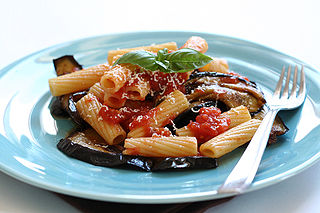
Sicilian cuisine is the style of cooking on the island of Sicily. It shows traces of all cultures that have existed on the island of Sicily over the last two millennia. Although its cuisine has much in common with Italian cuisine, Sicilian food also has Greek, Spanish, French, Jewish, Maghrebi, and Arab influences.

Mount Etna, or simply Etna, is an active stratovolcano on the east coast of Sicily, Italy, in the Metropolitan City of Catania, between the cities of Messina and Catania. It is located above the convergent plate margin between the African Plate and the Eurasian Plate. It is one of the tallest active volcanoes in Europe, and the tallest peak in Italy south of the Alps with a current height of 3,357 m (11,014 ft), though this varies with summit eruptions. Over a six-month period in 2021, Etna erupted so much volcanic material that its height increased by approximately 100 ft (30 m), and the southeastern crater is now the tallest part of the volcano.

Vizzini is a town and comune in the Metropolitan City of Catania, on the island of Sicily, southern Italy. It is located 60 kilometres (37 mi) from Catania in the Hyblaean Mountains, on the most northwesterly slopes of Monte Lauro.
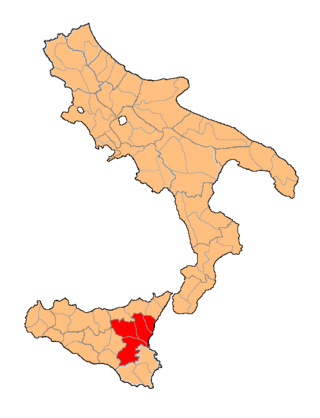
The province of Catania was a province in the autonomous island region of Sicily, Italy. Its capital was the city of Catania. It had an area of 3,552 square kilometres (1,371 sq mi) and a total population of about 1,116,917 as of 31 December 2014.
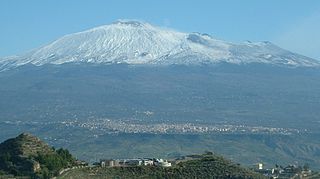
Adrano, ancient Adranon, is a town and comune in the Metropolitan City of Catania on the east coast of Sicily.

Castello Ursino, also known as Castello Svevo di Catania, is a castle in Catania, Sicily, southern Italy. It was built in the 13th century as a royal castle of the Kingdom of Sicily, and is mostly known for its role in the Sicilian Vespers, when it became the seat of the Sicilian Parliament. The castle is in good condition today, and it is open to the public as a museum.

Randazzo is a town and comune in the Metropolitan City of Catania, Sicily, southern Italy. It is situated at the northern foot of Mount Etna, c. 70 kilometres (43 mi) northwest of Catania. It is the nearest town to the summit of Etna, and is one of the points from which the ascent may be made.

Aci Castello is a comune in the Metropolitan City of Catania in Sicily, Italy. The city is located 9 kilometres (6 mi) north of Catania on the Mediterranean coast. The primary economic sectors are agriculture and industry. The city is neighbored by Aci Catena, Acireale, Catania, San Gregorio di Catania and Valverde.

Fiumefreddo di Sicilia is a comune in the Metropolitan City of Catania on the coast of the Ionian Sea on the island of Sicily, southern Italy. It shares its borders with the municipalities of Calatabiano to the north, Mascali to the south and Piedimonte Etneo to the west.

Belpasso is a comune (municipality) in the Metropolitan City of Catania in the Italian region Sicily, located about 150 kilometres (93 mi) southeast of Palermo and about 10 kilometres (6 mi) northwest of Catania. Belpasso is the second biggest comune of the Catania's area for area.

Maletto is a comune (municipality) in the Metropolitan City of Catania in the Italian region Sicily, located about 140 kilometres (87 mi) east of Palermo and about 40 kilometres (25 mi) northwest of Catania.
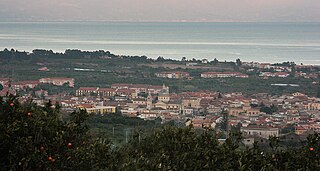
Mascali is a comune (municipality) in the Metropolitan City of Catania in the Italian region Sicily, located about 170 kilometres (110 mi) east of Palermo and about 30 kilometres (19 mi) northeast of Catania.

The Hundred-Horse Chestnut is the largest and oldest known chestnut tree in the world. Located on Linguaglossa road in Sant'Alfio, on the eastern slope of Mount Etna in Sicily — only 8 km (5.0 mi) from the volcano's crater — it is generally believed to be 2,000 to 4,000 years old. It is a sweet chestnut. Guinness World Records has listed it for the record of "Greatest Tree Girth Ever", noting that it had a circumference of 57.9 m (190 ft) when it was measured in 1780. Above ground, the tree has since split into multiple large trunks, but below ground, these trunks still share the same roots. An early 1895 image with a man next to the tree for perspective, shows it was closer to 10 m in diameter at breast height, rather than the claimed 18.5 m in diameter at breast height.
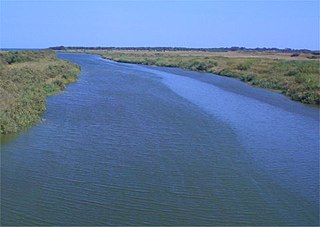
The Simeto is a 113-kilometre (70 mi) long river in Sicily, southern Italy. At 116 kilometres (72 mi), it is the second longest river on the island after the Salso, but the most important in terms of watershed. It flows through the province of Enna and the province of Catania.
Etna is a Denominazione di origine controllata (DOC) for wine from the Etna region in Italy.
Minella bianca is a white Italian wine grape variety that is indigenous to the island of Sicily where it is grown in the foothills of Mount Etna. The name Minella is derived from the Sicilian word minna to which the berries have some resemblance due to their elongated shape. Minella bianca is very rarely seen as a varietal and is most often used in field blends with Carricante and Catarratto bianco.
Piazza dell'Università is a city square in the historic center of the city of Catania, in Sicily, Italy. It is bisected by Via Etnea.

The Angevin invasion of Sicily (1298–1302) was a military campaign launched against the Kingdom of Sicily by an alliance of the Angevin Kingdom of Naples, the Crown of Aragon, and the papacy during the War of the Sicilian Vespers. Fought in the final years of the 20-year long war, the campaign saw the alliance make some territorial gains on the island before ultimately withdrawing in the face of Sicilian resistance.

















